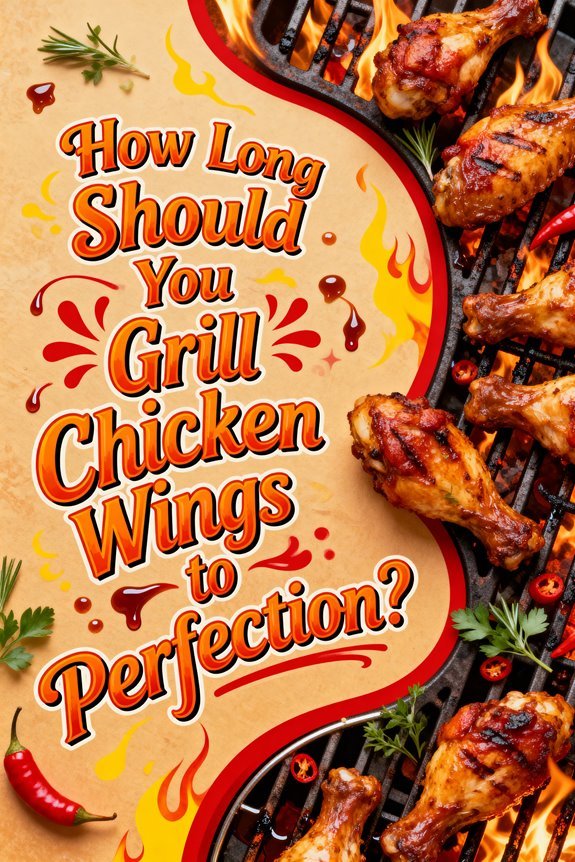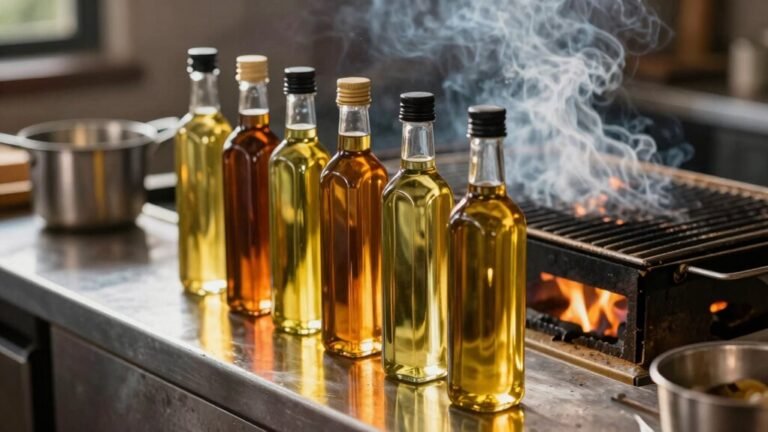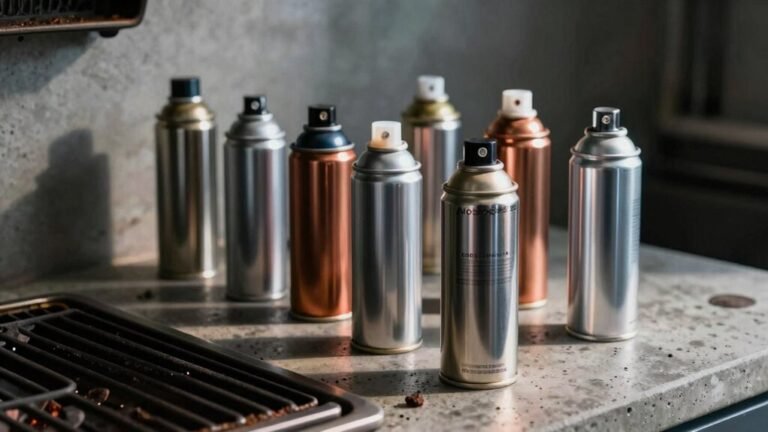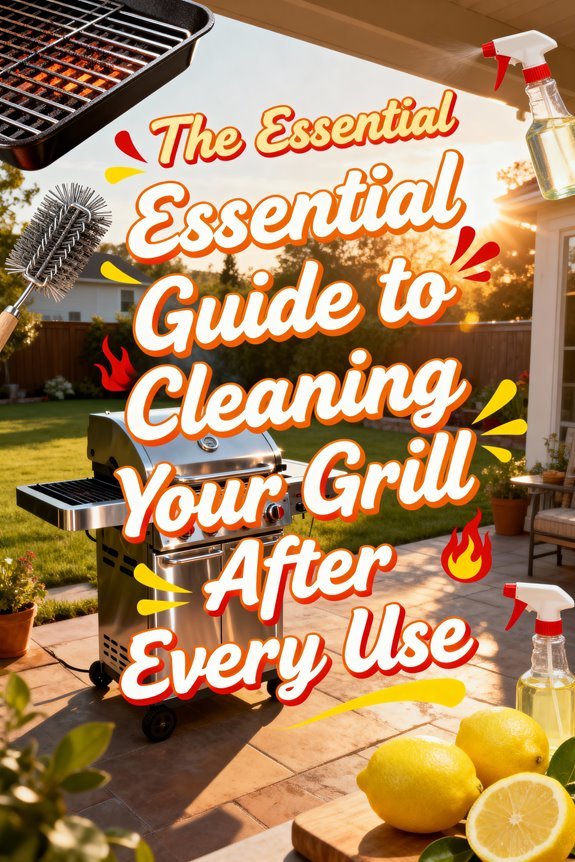You’ll need to grill chicken wings for 25-30 minutes at 375-400°F, flipping them every 3-5 minutes to achieve perfectly crispy skin. The key isn’t just timing—you must monitor the internal temperature, ensuring it reaches 165°F minimum, though 170-180°F is ideal. Pat your wings dry before grilling and maintain consistent heat throughout the process. Add any sauce only during the final five minutes to prevent burning. Master these fundamentals, and you’ll uncover additional techniques that elevate your wing-grilling game to professional standards.
Preparing Your Grill and Wings for Optimal Results
Preparing your grill and wings properly determines whether you’ll achieve restaurant-quality results or end up with burnt exteriors and undercooked meat. For effective grill preparation, preheat to 375°F-450°F and clean and oil your grates to prevent sticking. Set up indirect heat zones on charcoal grills to avoid excessive charring while ensuring thorough cooking. Before starting, ensure your grill is thoroughly cleaned using a steam cleaning method at 400°F for optimal results. Just like with perfectly grilled burgers, using indirect heat zones helps maintain moisture and develop rich color without frequent flipping.
Wing seasoning begins with patting wings completely dry—this essential step enables crispy skin development. Apply a light coating of avocado oil to promote browning, then season evenly with salt, pepper, and garlic powder. For even better crispness, season wings and refrigerate uncovered overnight to allow the skin to dry further. Consider trimming wing tips to maximize grill space and prevent over-crisping. If using frozen wings, bring them closer to room temperature for easier handling. Have an instant-read thermometer ready to monitor doneness accurately throughout the grilling process.
Grilling Time and Temperature Guidelines
With your grill preheated and wings seasoned, you’ll achieve ideal results by maintaining a temperature between 350°F and 425°F throughout the cooking process. Medium heat at 350°F requires 15-20 minutes of total cooking time, while higher temperature variations at 425°F extend this to 25-30 minutes. These grilling techniques demand turning wings every 3-5 minutes to guarantee even heat exposure and prevent charring. Similar to perfectly smoked meats, flipping halfway through ensures even cooking and optimal results. Just as with burgers, using simple seasonings allows the natural flavors of the meat to shine through.
Your primary indicator of doneness should be internal temperature, not time alone. Wings reach safety at 165°F, though 170-175°F provides superior texture and easier meat separation from bones. Insert an instant-read thermometer into the thickest portion for accurate assessment. Spacing wings adequately and utilizing indirect heat zones allows you to manage pieces cooking at different rates effectively.
For best results, cook wings over direct heat while maintaining consistent rotation throughout the grilling process.
The Flipping Technique for Even Cooking and Crispy Skin
Proper flipping technique directly determines whether your chicken wings achieve uniformly crispy skin or emerge with one side soggy and undercooked. Execute your first flip after 15–20 minutes on standard grills, or 20–30 minutes on pellet grills at 400°F. Flipping frequency should balance crisping needs with heat management—flip every 3–5 minutes for direct grilling at 350°F, but avoid excessive flipping that disrupts skin development. Pat wings dry before grilling and maintain adequate spacing for airflow. Use dual-zone setups to move wings between hot and cool areas during flips, managing exposure and preventing charring. Inspect the underside after each flip for dark spots requiring zone adjustment. Similar to tender grilling times, monitor wings carefully during the final minutes of cooking. Employ tongs carefully to preserve seasoning and skin integrity while maintaining consistent flipping intervals for ideal texture. Start with the nicer side down to achieve the best grill marks during the initial cooking phase. For maximum smoke flavor, consider low temperature smoking at 225-250°F before finishing at higher heat.
Checking for Doneness: Why Temperature Matters More Than Time
While grilling times provide helpful guidelines, internal temperature remains the only reliable indicator of chicken wing doneness. You’ll need to reach a minimum of 165°F (74°C) for food safety, but targeting 170-180°F greatly improves texture and flavor. Use an instant-read digital thermometer inserted into the thickest part of the wing, avoiding bone contact for temperature precision. Time alone fails to account for variables like wing size, grill heat fluctuations, and uneven heat distribution. Wings cooked identically time-wise can yield drastically different results across different grills or batches. Temperature precision guarantees you’re breaking down collagen properly while rendering fat for crispy skin without drying the meat. Just as with a room temperature steak, letting wings come to room temperature before grilling helps ensure even cooking throughout. At this temperature range, collagen breakdown occurs, enhancing tenderness while higher temperatures allow for crispy skin while maintaining juicy meat. Always confirm visual cues like golden-brown skin with accurate temperature readings before serving. Similar to bone-in thighs, letting wings rest after reaching proper doneness temperature helps retain their juiciness before serving.
Mistakes to Avoid When Grilling Chicken Wings
Knowing when your wings reach the perfect internal temperature sets you up for success, but several common grilling mistakes can undermine even the most careful temperature monitoring. Oil your grill grates rather than the wings themselves to prevent flare-ups and burnt spots. Similar to grilling chicken breasts, maintaining proper temperature control is crucial for optimal results. Avoid excessive heat—maintain 350–400°F using a two-zone setup for proper cooking without charring. Turn wings every 3–5 minutes for even crispiness, but don’t flip constantly as this prevents proper searing. Keep the lid closed except when turning to retain heat and guarantee thorough cooking. Using a meat thermometer, check that wings reach internal temperature of 160°F before the final sear. Most importantly, add sauce only during the final five minutes; applying it too early burns the sugars, destroying flavor balance and creating bitterness. Set a timer to maintain proper cooking times and prevent accidentally burning your wings. These adjustments transform common mistakes into consistently excellent results.







